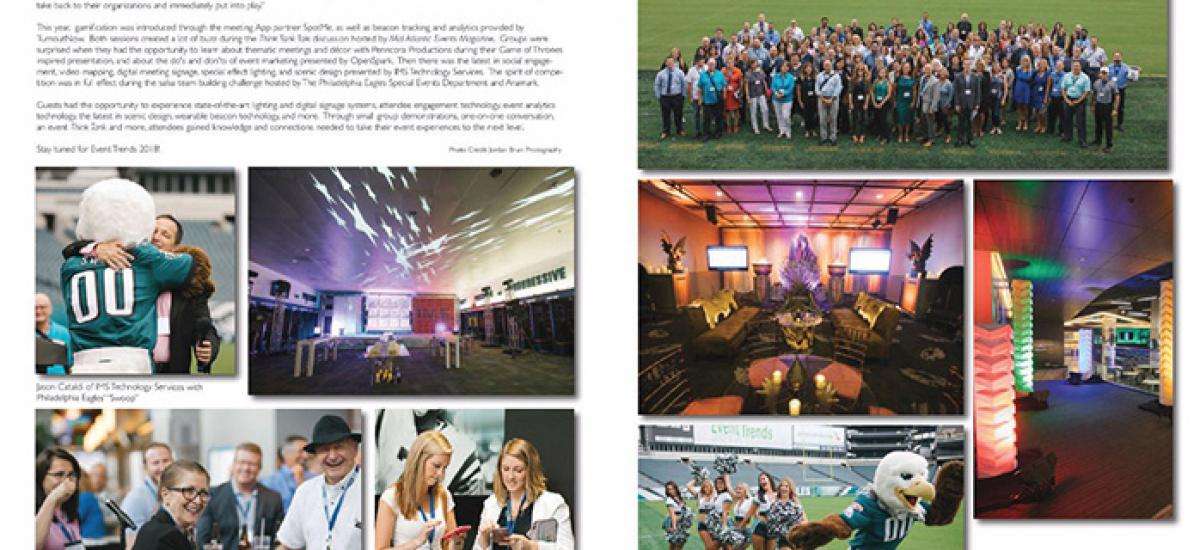Social Media Tips to Make Meetings More Engaging
Looking for ideas on how to use social media interaction to increase engagement at meetings and events? Donna Baldino, IMS National Account Manager, asked the experts and here is what they had to say.
Read more
Event Trends 2017 in September-October 2017 Issue of Mid-Atlantic Events Magazine
What an amazing turnout! "We are so thankful that our guests see the value and benefit of attending Event Trends each year," said Jason Cataldi, VP of Sales and Marketing, IMS Technology Services, Inc. "Our goal each year is to provide attendees with a positive meeting experience where they will walk away with at least two or three new ideas that they can take back to their organizations and immediately put into play."
Read more
IMS in September-October 2017 Issue of Mid-Atlantic Events Magazine
Jason Cataldi, CTS was interviewed for the “Technology Update” article that appears in the September/October 2017 edition of Mid-Atlantic Events Magazine.
Read more
4 Things I Wish I Knew When I Was a New Event Planner
Before working for IMS Technology Services, I was a freelance event planner. I started off planning for friends and family, which led to further connections and snowballed into a side job. It is an accomplishment I am very proud of because I learned from research, networking, hard work, and my own mistakes. It was through my love for the corporate event planning industry and my full-time job in sales that lead me to IMS Technology Services.
Read more
A Marketer’s Perspective on the Event Industry: Your Event Should be an Extension of your Brand
I am a big advocate of brand, and brand image. I believe brand and brand image are two of the most important parts of your company – possibly even THE most important. I look at brand and brand image, because, often they point to the same thing - how you are perceived by others. Perception is reality, and a good product (or company of good people) can be defeated by a bad perception of the company. Conversely, a flop of a product can be forgotten if a company has a favorable brand image. Today, brand is often one of the most ignored pieces of marketing. And, as a marketer, and event personnel, our brand is fundamental to our company’s overall success.
Read more
5 AV Facts You Need to Know for the CMP Exam
I recently received my CMP certification, and one thing I did to prepare was take a prep course offered by MPI PHL. While I was worried about how many gallons of coffee to order for a hypothetical meeting, my fellow course takers were understandably anxious about the subject of “Technical Production” since they didn’t have a background in audio visual. If you’re in the same boat, here’s a refresher on key points to remember about event video/projection.
Read more





